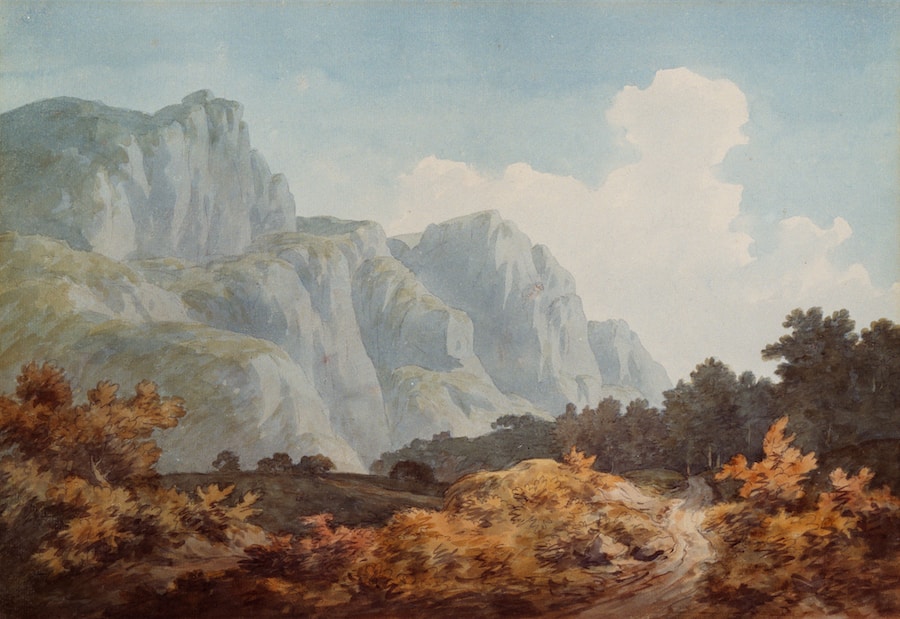Introduction: The Emergence of Virtual Art Therapy
Virtual art therapy is a form of therapy that utilizes technology to provide therapeutic interventions and support to individuals. It combines the principles of traditional art therapy with the convenience and accessibility of virtual platforms. In recent years, virtual art therapy has gained popularity and recognition as an effective tool for promoting mental health and well-being.
Art therapy itself has a long history, dating back to the early 20th century. It was first recognized as a profession in the 1940s and has since evolved into a widely accepted form of therapy. Art therapy uses the creative process of making art to improve and enhance the physical, mental, and emotional well-being of individuals. It is based on the belief that the act of creating art can be therapeutic and healing.
The COVID-19 pandemic has further accelerated the rise of virtual art therapy. With the restrictions on in-person gatherings and the need for social distancing, many therapists and clients have turned to virtual platforms to continue their therapeutic work. Virtual art therapy has provided a solution to the challenges posed by the pandemic, allowing individuals to access therapy from the comfort and safety of their own homes.
Understanding Stress and Trauma: The Role of Art Therapy
Stress and trauma can have a profound impact on an individual’s mental health. They can lead to symptoms such as anxiety, depression, and post-traumatic stress disorder (PTSD). Art therapy has been shown to be an effective tool in addressing and alleviating these symptoms.
Art therapy provides a safe and non-threatening space for individuals to express and process their emotions. Through the act of creating art, individuals can externalize their internal experiences and gain a deeper understanding of their thoughts and feelings. This process can be particularly beneficial for individuals who struggle to verbalize their emotions or who have experienced trauma.
Creativity plays a crucial role in the healing process. Engaging in creative activities stimulates the brain and promotes the release of endorphins, which are natural mood enhancers. Art therapy allows individuals to tap into their creativity and use it as a tool for self-expression and healing. By engaging in the creative process, individuals can gain a sense of control and empowerment over their own healing journey.
The Benefits of Virtual Art Therapy: Accessibility and Convenience
One of the key benefits of virtual art therapy is its accessibility. Virtual platforms allow individuals to access therapy from anywhere in the world, eliminating the barriers of distance and transportation. This is particularly beneficial for individuals who live in remote areas or who have limited access to mental health services. Virtual art therapy provides an opportunity for these individuals to receive the support they need without having to travel long distances or incur additional expenses.
In addition to accessibility, virtual art therapy also offers convenience. Individuals can schedule therapy sessions at a time that is convenient for them, without having to worry about commuting or taking time off work. This flexibility allows individuals to integrate therapy into their daily lives more easily, increasing the likelihood of consistent engagement and progress.
Virtual art therapy is also beneficial for individuals with disabilities. Traditional art therapy may pose physical limitations for individuals with mobility issues or other disabilities. Virtual platforms provide adaptive tools and technologies that can accommodate a wide range of abilities, allowing individuals with disabilities to fully participate in the therapeutic process.
The Science Behind Virtual Art Therapy: How it Works
The neuroscience of art therapy provides insights into how virtual art therapy works and why it is effective. When individuals engage in the creative process, their brains release dopamine, a neurotransmitter associated with pleasure and reward. This release of dopamine can help reduce stress and anxiety, improve mood, and enhance overall well-being.
Virtual art therapy works by creating a virtual environment that mimics the experience of traditional art therapy. Individuals can use digital tools and materials to create art, and therapists can provide guidance and support through video conferencing or other virtual platforms. The virtual environment allows for real-time interaction and feedback, creating a sense of connection and engagement between the therapist and the client.
Virtual art therapy offers several benefits over traditional art therapy. It eliminates the need for physical art supplies, making it more cost-effective and environmentally friendly. It also allows for easy storage and sharing of artwork, which can be beneficial for individuals who want to reflect on their progress or share their work with others. Additionally, virtual art therapy can be easily integrated with other forms of therapy, such as talk therapy or cognitive-behavioral therapy, to provide a comprehensive and holistic approach to treatment.
Virtual Art Therapy Techniques: Exploring Different Modalities
Virtual art therapy encompasses a wide range of techniques and modalities. Some of the most common modalities include:
1. Digital Art Therapy: This modality involves using digital tools and software to create art. Individuals can use a tablet, computer, or smartphone to draw, paint, or create digital collages. Digital art therapy offers a wide range of possibilities and allows for easy experimentation and exploration.
2. Virtual Reality Art Therapy: Virtual reality (VR) art therapy uses immersive virtual environments to create a sense of presence and engagement. Individuals can use VR headsets and controllers to create art in a three-dimensional space. This modality can be particularly beneficial for individuals who struggle with body image issues or who have difficulty connecting with their emotions.
3. Online Art Therapy Groups: Online art therapy groups provide a supportive and collaborative environment for individuals to engage in the creative process. Participants can share their artwork, receive feedback from others, and engage in group discussions. Online art therapy groups can foster a sense of community and connection, even in a virtual setting.
The choice of modality depends on the individual’s preferences, needs, and goals. Some individuals may prefer the tactile experience of traditional art materials, while others may be more comfortable using digital tools. It is important for individuals to explore different modalities and find the one that resonates with them the most.
Virtual Art Therapy in Action: Case Studies and Success Stories
Real-life examples of virtual art therapy in action demonstrate the transformative power of this therapeutic approach. One case study involved a woman who had experienced a traumatic event and was struggling with anxiety and depression. Through virtual art therapy, she was able to express her emotions and gain a sense of control over her healing process. Over time, she developed coping strategies and a renewed sense of self-confidence.
Success stories of individuals who have benefited from virtual art therapy highlight the positive impact it can have on mental health and well-being. One success story involved a teenager with autism who struggled with social interactions and self-expression. Through virtual art therapy, he was able to communicate his thoughts and feelings through art, which helped improve his social skills and self-esteem. He also developed a passion for art and continued to engage in creative activities outside of therapy.
These case studies and success stories demonstrate the potential of virtual art therapy to change lives and promote healing. They highlight the importance of providing accessible and inclusive mental health services that can reach individuals who may not have otherwise had access to therapy.
Overcoming Challenges: Addressing Concerns and Limitations
While virtual art therapy offers many benefits, there are also concerns and limitations that need to be addressed. Some common concerns include the lack of physical presence and the potential for technological glitches or connectivity issues. These concerns can be addressed by establishing clear guidelines and protocols for virtual sessions, ensuring that both the therapist and the client have access to reliable technology and internet connections.
Another concern is the potential for a loss of the therapeutic relationship in a virtual setting. Building rapport and trust can be more challenging when there is no physical presence. However, therapists can use various techniques, such as active listening, empathy, and validation, to establish a strong therapeutic alliance with their clients.
Virtual art therapy also has some limitations. For example, individuals with limited access to technology or who are not comfortable using digital tools may not be able to fully engage in virtual art therapy. Additionally, some individuals may prefer the tactile experience of traditional art materials and may find it difficult to transition to a virtual environment. These limitations can be overcome by providing alternative options, such as mailing art supplies to clients or offering hybrid sessions that combine virtual and in-person components.
Integrating Technology: The Future of Art Therapy
The integration of technology into art therapy has the potential to revolutionize the field and enhance the therapeutic experience. Technology can provide new tools and techniques that can expand the possibilities of art therapy. For example, virtual reality technology can create immersive and interactive environments that can simulate real-life experiences and promote emotional healing.
Technology can also enhance the therapeutic experience by providing real-time feedback and data. For example, wearable devices can track physiological responses, such as heart rate and skin conductance, during the creative process. This data can provide valuable insights into the individual’s emotional state and help guide the therapeutic interventions.
Virtual reality has the potential to take art therapy to new heights. By creating virtual environments that mimic real-life settings, individuals can engage in therapeutic activities that may not be possible in a traditional therapy room. For example, individuals with phobias or anxiety disorders can gradually expose themselves to their fears in a controlled and safe virtual environment, allowing for desensitization and healing.
Training and Certification: Preparing for a Career in Virtual Art Therapy
To become a virtual art therapist, individuals need to complete the necessary training and certification requirements. The first step is to obtain a bachelor’s degree in a related field, such as psychology, counseling, or art therapy. After completing the undergraduate degree, individuals can pursue a master’s degree in art therapy or a related field.
Once the educational requirements are met, individuals can pursue certification as an art therapist. The Art Therapy Credentials Board (ATCB) offers the Registered Art Therapist (ATR) and Board Certified Art Therapist (ATR-BC) credentials. These credentials require individuals to complete a certain number of supervised clinical hours and pass a certification exam.
In addition to the educational and certification requirements, virtual art therapists also need to have a strong understanding of technology and virtual platforms. They need to be comfortable using digital tools and have the ability to troubleshoot technical issues that may arise during virtual sessions.
The future job outlook for virtual art therapists is promising. As the field of mental health continues to evolve and adapt to new technologies, the demand for virtual art therapists is expected to increase. Virtual art therapists can work in a variety of settings, including private practice, hospitals, schools, and community centers.
Conclusion: The Impact of Virtual Art Therapy on Mental Health and Well-being
Mental health and well-being are essential components of overall health and quality of life. Virtual art therapy has emerged as a powerful tool for promoting mental health and well-being, particularly in the face of the COVID-19 pandemic. It offers accessibility, convenience, and a wide range of modalities that can cater to the unique needs and preferences of individuals.
The impact of virtual art therapy on mental health is significant. It provides a safe and supportive space for individuals to express and process their emotions, leading to improved self-awareness and self-esteem. Virtual art therapy also fosters a sense of connection and community, even in a virtual setting, which can help combat feelings of isolation and loneliness.
The future of virtual art therapy is promising. As technology continues to advance, the possibilities for integrating technology into art therapy are endless. Virtual reality, wearable devices, and other emerging technologies have the potential to enhance the therapeutic experience and provide new tools for healing.
In conclusion, virtual art therapy is a valuable and effective form of therapy that has the potential to change lives. It offers accessibility, convenience, and a wide range of modalities that can cater to the unique needs and preferences of individuals. As the field of mental health continues to evolve, virtual art therapy will play an increasingly important role in promoting mental health and well-being.
Find out how Torongo Therapyplus can help you with your needs. Get in touch with us at smile@torongo.life, or call us on 02 8809 9965.






























